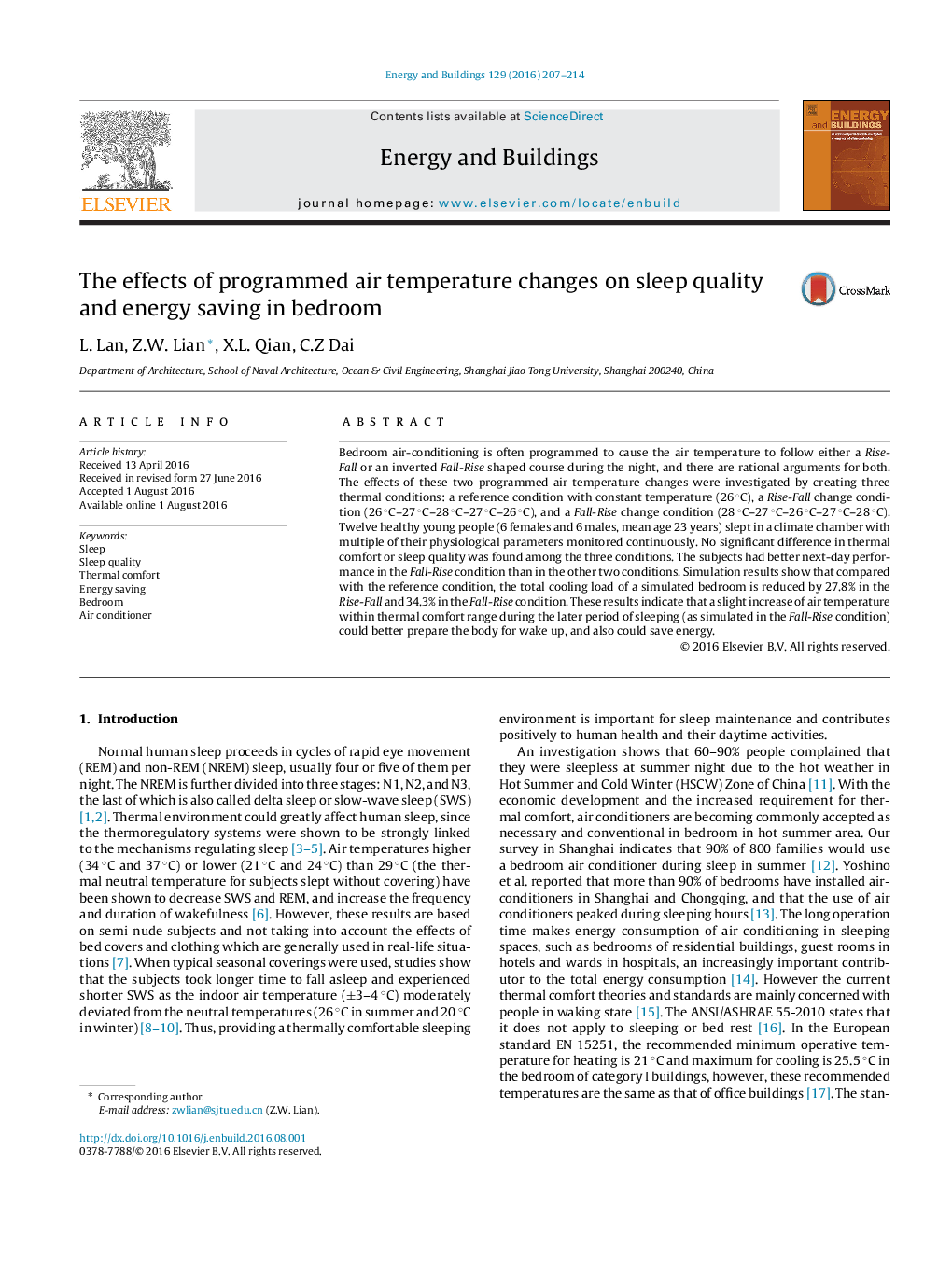| Article ID | Journal | Published Year | Pages | File Type |
|---|---|---|---|---|
| 6729623 | Energy and Buildings | 2016 | 8 Pages |
Abstract
Bedroom air-conditioning is often programmed to cause the air temperature to follow either a Rise-Fall or an inverted Fall-Rise shaped course during the night, and there are rational arguments for both. The effects of these two programmed air temperature changes were investigated by creating three thermal conditions: a reference condition with constant temperature (26 °C), a Rise-Fall change condition (26 °C-27 °C-28 °C-27 °C-26 °C), and a Fall-Rise change condition (28 °C-27 °C-26 °C-27 °C-28 °C). Twelve healthy young people (6 females and 6 males, mean age 23 years) slept in a climate chamber with multiple of their physiological parameters monitored continuously. No significant difference in thermal comfort or sleep quality was found among the three conditions. The subjects had better next-day performance in the Fall-Rise condition than in the other two conditions. Simulation results show that compared with the reference condition, the total cooling load of a simulated bedroom is reduced by 27.8% in the Rise-Fall and 34.3% in the Fall-Rise condition. These results indicate that a slight increase of air temperature within thermal comfort range during the later period of sleeping (as simulated in the Fall-Rise condition) could better prepare the body for wake up, and also could save energy.
Related Topics
Physical Sciences and Engineering
Energy
Renewable Energy, Sustainability and the Environment
Authors
L. Lan, Z.W. Lian, X.L. Qian, C.Z Dai,
